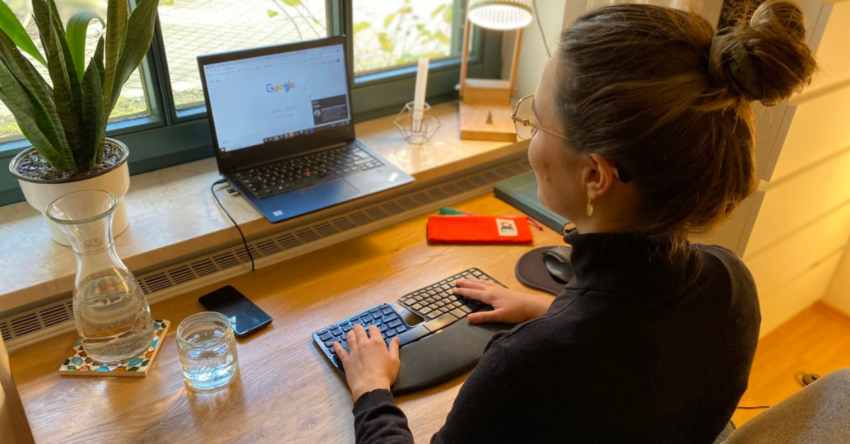The Physical and Cognitive Disabilities affinity group is dedicated to making a workplace that is more welcoming to employees with physical and cognitive disabilities. One of their goals is to keep all our colleagues healthy and injury-free. Client Success Coordinator and affinity group member, Nicola Steinigen, shares her tips for creating an ergonomic home office.
Interestingly, she never had these problems when she was working in an onsite office. She automatically adjusted her chair and monitor. And of course spent some time walking to meeting rooms (not a marathon, but still it kept her body moving!)
Most of us need to work from our devices for eight hours every day, so it’s important to get things right.
Do you face any physical issues while working from home?
If your home office is not as comfortable or suited to your body type as it could be, you could find yourself facing headaches, neck pain, back pain, tired eyes, numbness in your hands, legs, or arms; tension in your neck, fingers, and wrists.
While these are seemingly small pain points, leaving these symptoms unattended can cause greater suffering in the future. Do yourself a favor and update your home office setup. Looking for some simple changes?
DIY Home Office Ergonomics
You don’t need to see an ergonomics expert to improve your home office. Here’s how to hack your own workspace easily and to keep yourself comfortable and injury-free:
1. Raise your computer monitor
Laptops are ergonomic disasters. It’s impossible to get your screen at eye level and keep your keyboard in the proper position at the same time. Using an external keyboard and mouse, elevate your laptop to a height where your eyeliner meets just above the middle of the screen. Get thrifty: you can use old books, yoga blocks, a shoebox, etc. I simply put mine on the window sill in front of my desk. It may not be the prettiest set up, but your neck will thank you!
2. Reassess your sitting position
Sit comfortably with your feet resting on something (the floor, a bag, a cushion). Set a decent amount of space between your eyes and the monitor. Your keyboard is directly in front of you with some space from the table edge. Check if you have the right distance between the table edge and your keyboard by a 90-degree bend in your arms. 90 degrees is key here; it should also be the angle of your lower leg and upper thigh. Make sure your legs and arms are not cramped. Keep your shoulders relaxed. Tense shoulder and back muscles can cause all sorts of problems.
3. Invest in the right hardware
An external mouse and keyboard are must-haves – your wrists and hands will be so happy, I promise! I have a Bluetooth keyboard and mouse which allows me to raise my laptop (see tip #1!)
However modern and ergonomic your hardware might be, you still need to be mindful of your body and how you spend your time to benefit from your properly set up workspace. Make sure to get up and move between meetings, take a stretch break, and fuel your body with lots of water.
Now its up to you! Stay healthy and productive at home and let us know how you’ve updated your home office ergonomics!
Nicola Steinigen
